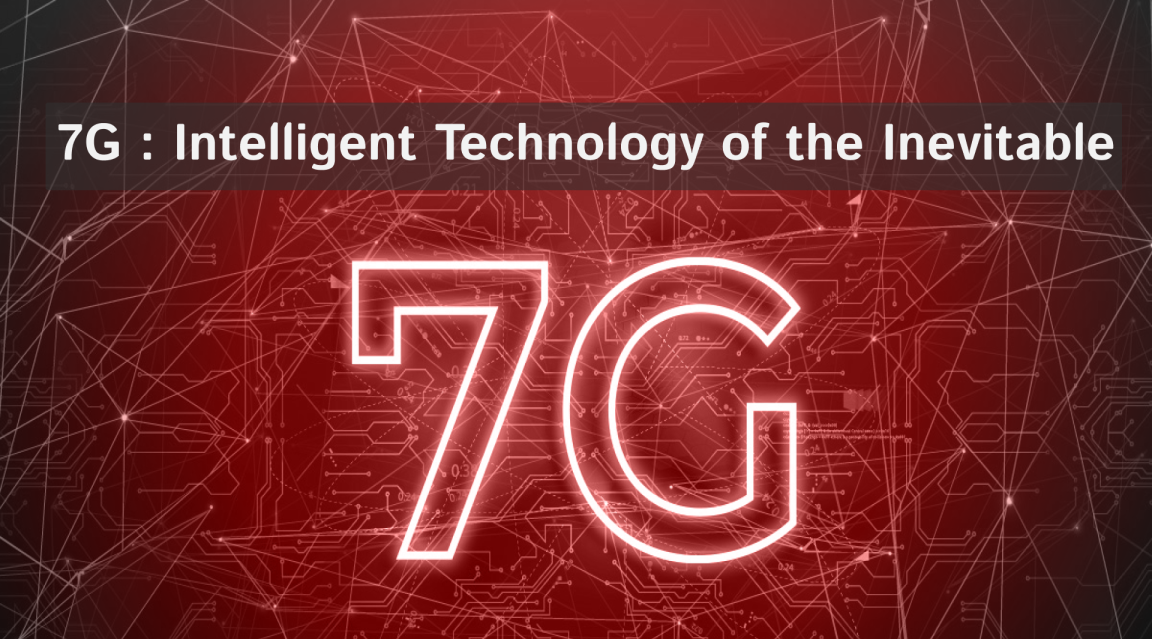Introduction: The growth of mobile communications has been nothing short of revolutionary. Each generation of wireless technology has resulted in transformational developments, from basic 1G networks to complex 5G systems that are only now becoming popular. As we approach the 6G era, it’s time to look even further ahead to the arrival of 7G and its implications for universal internet integration. This article dives into the evolution of prior “G’s” to 7G, examining how each step laid the way for an era of unparalleled connectedness.
The Path from 1G to 5G
1G: The Analog Dawn
The first generation of mobile networks, 1G, introduced analog voice communication. Launched in the 1980s, it enabled mobile telephony but suffered from poor sound quality, limited capacity, and no data services.
2G: The Digital Revolution
The 1990s brought 2G, a leap to digital transmission that improved voice clarity and added basic data services like SMS and MMS. With encryption for security, 2G laid the groundwork for more sophisticated mobile services.
3G: The Data Era
3G networks, emerging in the early 2000s, provided faster data transfer rates, enabling mobile internet browsing, video calling, and streaming. This generation was crucial for the smartphone revolution, allowing apps and multimedia to flourish.
4G: The Age of Speed
With 4G, mobile internet speeds rivaled home broadband, making high-definition video streaming, online gaming, and complex applications possible on the go. Launched in the 2010s, 4G also introduced the concept of LTE (Long Term Evolution) to enhance performance.
5G: The Smart Network
The current generation, 5G, is characterized by ultra-high speeds, low latency, and massive connectivity. It supports the Internet of Things (IoT), autonomous vehicles, smart cities, and more, creating a highly interconnected and responsive network environment.
The Transition to 6G
6G: Beyond Connectivity
While 5G is still being rolled out worldwide, research and development for 6G are already underway. Expected by the 2030s, 6G aims to integrate even more advanced technologies such as AI, extended reality (XR), and seamless global coverage. It promises terabit-per-second speeds, virtually zero latency, and an intelligent network that can autonomously optimize performance.
7G: The Future of Connectivity and Integration
Defining 7G
7G, projected to emerge around the 2040s, represents a quantum leap in mobile technology. It envisions a fully integrated global network where the distinction between local and global internet access blurs, and connectivity becomes ubiquitous and seamless.
Key Features of 7G
Hyper-Connectivity: 7G will connect billions of devices with ultra-high bandwidth, supporting data-heavy applications like holographic communications and advanced AI interactions.
Ultra-Low Latency: Near-instantaneous data transfer will make real-time applications more efficient, from remote surgery to autonomous vehicle networks.
Energy Efficiency: Sustainable and green technology will be at the forefront, reducing the environmental impact of massive connectivity.
Global Integration: Universal internet access will be achieved, bridging the digital divide and ensuring everyone, regardless of location, can connect to the network.
Advanced Security: Enhanced cybersecurity measures will protect against increasingly sophisticated threats, safeguarding user data and privacy.
Universal Internet Integration
7G aims to create a universally integrated internet where connectivity is a fundamental right, accessible to all. This will involve:
Satellite Networks: Leveraging low Earth orbit (LEO) satellites to provide coverage in remote and underserved areas.
Dynamic Spectrum Sharing: Optimizing spectrum use to ensure efficient and fair distribution of bandwidth.
Interoperable Systems: Ensuring different networks and devices can seamlessly communicate and collaborate.
Implications of 7G
Economic Impact
7G will drive economic growth by enabling new industries and enhancing productivity across sectors. The ability to connect and interact in real-time globally will foster innovation and create new business opportunities.
Social Transformation
With universal internet access, educational and healthcare resources can reach the most remote and impoverished areas, improving quality of life and reducing inequalities.
Technological Advancements
7G will catalyze advancements in AI, machine learning, and XR technologies, pushing the boundaries of what is technologically possible and enhancing human capabilities.
Conclusion
The evolution from 1G to 7G is a testament to human ingenuity and the relentless pursuit of better connectivity. As we prepare for the 7G era, the vision of a universally integrated internet becomes increasingly tangible. This next generation promises not just to enhance communication but to transform society, making the world more connected, equitable, and innovative than ever before.
FAQs on 7G and Universal Internet Integration
1. What is 7G and how does it differ from previous generations?
7G represents the next leap in mobile technology, expected to emerge around the 2040s. Unlike previous generations, it promises hyper-connectivity, ultra-low latency, energy efficiency, and universal internet access, enabling seamless global integration and advanced applications like holographic communications.
2. How will 7G achieve universal internet integration?
7G will leverage advanced technologies such as low Earth orbit (LEO) satellites for global coverage, dynamic spectrum sharing for efficient bandwidth use, and interoperable systems to ensure seamless communication between diverse networks and devices.
3. What are the potential economic impacts of 7G?
7G will drive economic growth by enabling new industries, enhancing productivity, and fostering innovation. Its global connectivity will create business opportunities, support remote work, and facilitate real-time global collaboration.
4. How will 7G improve social equality?
With universal internet access, 7G will bridge the digital divide, providing remote and underserved areas with access to educational and healthcare resources. This will improve quality of life, reduce inequalities, and empower communities worldwide.


